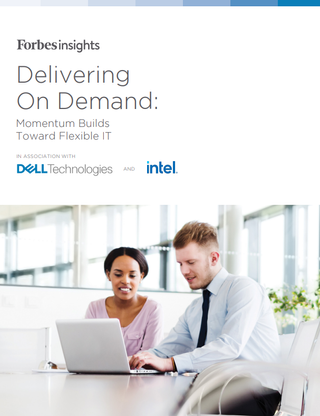Managing digital transformation during the chip crunch
With the silicon shortage likely to last until 2023 at the earliest, digitisation plans may not be linear this year, and IT leaders will need to find workarounds

If 2021 was the year businesses adopted a connected enterprise mindset to adapt to new ways of working, 2022 will be the year digital transformation becomes an even more integral part of enterprise planning.
Global IT expenditure is forecast to grow 5.5% year-on-year to $4.47 trillion (approximately £3.3 trillion) this year, according to Gartner. Digital tech initiatives will remain a top strategic business priority for companies as they continue to reinvent the future of work, said its research vice president John-David Lovelock, in October. This is especially true for those focusing spending on making their infrastructure bulletproof and implementing increasingly complex hybrid work patterns.
IT departments, however, could very well hit a crunch point over the next 12 months. Demand for high-performance computing and data centres, which comprise the infrastructure underpinning remote work, has gone through the roof since the start of the pandemic. This, coupled with poor planning on the part of automakers and a surge in demand for home entertainment electronics, has led to an ongoing chip shortage. Simply, there currently aren’t enough chips to satiate the hunger for silicon.
This shortage is set to continue for some time yet. Intel CEO Pat Gelsinger has warned the shortage will continue to impact production until 2023 at the earliest. Analysts at Deloitte, meanwhile, are slightly more optimistic and believe that the imbalance in supply and demand will normalise towards the end of this year. The shortage will, nevertheless, restrict what businesses can achieve in the coming months.
Delays, delays, delays
Amid the chip crunch, companies may struggle to get their hands on crucial hardware and equipment, says Maynard Williams, a managing director at Accenture Technology. “Businesses may find the nuts and bolts of digital transformation start to become a problem,” he tells IT Pro. “Longer lead times for laptops could mean new employees, or those with broken devices, are left unable to work for extended periods of time.”
There are, nonetheless, effective workaround strategies, such as refurbishing devices and IT equipment, Williams adds. Open dialogue with suppliers and partners around lead times and bottlenecks can help businesses improve forecasting, so they aren’t forced to make last-minute decisions. Some suppliers may be able to build up a buffer of inventory to support businesses if and when their needs suddenly change.
Demand for laptops and personal computers has been strong throughout 2021, but sales slowed towards the end of the year as supply chain constraints snarled production volumes. Some major chip foundries have also been prioritising higher margin product lines, such as CPU servers for data centres.
Channel Pro Newsletter
Stay up to date with the latest Channel industry news and analysis with our twice-weekly newsletter

Delivering on demand: Momentum builds toward flexible IT
A modern digital workplace strategy
A key concern for IT leaders will be if and when delays bleed into digital transformation projects that rely on connected devices, says Williams. “A warehouse automation project, for example, requires robotics and IoT sensors as well as 5G edge solutions to relay data,” he explains.
“This is all powered by chips. Even though a project like this will be planned in advance, though, plans could be threatened as a lack of supply is pushing up the price of certain chips, forcing businesses to pay more. Projects could become more expensive than previously budgeted.”
The world’s leading chipmaker Taiwan Semiconductor Manufacturing Company (TSMC) is poised to raise chip prices by as much as 20% in 2022. Prices for the likes of microcontrollers and chips communication technologies could see sharper rises than CPUs and GPUs, which have had less significant availability issues. Forrester research shows the higher costs are likely to hamper IoT device deployment, and it’s forecast the crisis could slash 10% to 15% off the IoT industry’s growth rate this year.
The security hardware problem
Many digital transformation projects may have to be rethought over the next 12 months. What’s certain, though, is that businesses will want to move their workloads to the cloud. This is especially true for those companies that have had to reduce their cloud infrastructure spending during the pandemic.
The shift to remote and hybrid models of working is making businesses more vulnerable to data breaches, however, with more devices connected to a network, thus expanding the attack surface. The UK government’s Cyber Security Breaches Survey 2021, published last May, found 39% of companies had reported breaches in the prior 12 months. Kevin Schwarz, director of transformation strategy at security firm Zscaler, says the chip crunch has called into question why businesses still rely on hardware to secure network premises.
“Firewalls currently have long lead times of six to nine months. If businesses are waiting for hardware vendors to deliver delayed appliances or to extend their capabilities, they’re putting their infrastructure at risk,” Schwarz tells IT Pro.
The businesses that have found themselves exposed are those “that haven’t driven their cloud transformation in line with their security transformation,” he adds. “They’re sticking with traditional security models even though applications have shifted to the cloud and employees have left the network perimeter to work from anywhere.”
Reach for the clouds
Even if businesses know the hows and whys of securing cloud infrastructure, the practice often ends up getting pushed aside, whether because of limited resources or a lack of expertise. If digital transformation projects are to enable people to collaborate remotely and securely, then IT leaders need to move security to the cloud.
Schwaz says adopting a zero trust-based model helps to reduce the attack vector, while providing remote workers with a seamless user experience without hindering performance.
Beyond security, the cloud can drive digital transformation through PaaS and SaaS solutions. It can also help to circumvent any local device capacity issues. Workers may need more powerful laptops with better CPUs, for example, to effectively perform their role. Rather than wait for new hardware to become available, however, much of the processing can be done in the cloud, says Williams.
“Cloud providers also have stronger buying power,” he adds. “This means they have greater capacity to support businesses with scaling up their digital transformation plans.”
Rich is a freelance journalist writing about business and technology for national, B2B and trade publications. While his specialist areas are digital transformation and leadership and workplace issues, he’s also covered everything from how AI can be used to manage inventory levels during stock shortages to how digital twins can transform healthcare. You can follow Rich on LinkedIn.





